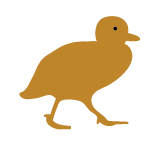This course will focus on the production of 3D animated content for digital art and visual effects using industry-standard software. Students will be introduced to those processes and techniques fundamental to the creation of digital special effects in film and broadcast. Modeling, texturing, lighting, dynamics and camera tracking will be explored with particular emphasis placed on their application in commercial production. Managing render output for compositing will also be addressed. A theoretical component examines the historical context of the discipline. This course includes a production schedule for the completion of a major project.
Students will be offered a solid grounding in industry standard digital animation processes relevant to the production of digital visual effects; development of skills in particle creation for visual effects production; the development of skills in photorealistic lighting and rendering; to be able to realise a concept from beginning to end; to refine project development and management skills.
Learning Outcomes
Upon successful completion, students will have the knowledge and skills to:
Upon successful completion of this course, students will be able to:
- Demonstrate creative control and a critical understanding of techniques, technologies and equipment used in the discipline
- Demonstrate the creative analysis and critical understanding of the materials and processes currently employed in digital media
- Show a critical awareness and developed understanding of historical and theoretical contexts relevant to the course
- Exploit the characteristics of materials and processes in an individual and conceptually developed way
- Demonstrate the possession of a critical, analytical and self-reflective practice
- Apply concepts and techniques to the development of resolved works of art
- Identify and develop personal topics for individual research
- Demonstrate adherence to OH & S requirements and procedures
Indicative Assessment
Portfolio of studio work (80%)
Studio Theory report/Journal/Studio Documentation equivalent to a 1000 word essay (20%)
The ANU uses Turnitin to enhance student citation and referencing techniques, and to assess assignment submissions as a component of the University's approach to managing Academic Integrity. While the use of Turnitin is not mandatory, the ANU highly recommends Turnitin is used by both teaching staff and students. For additional information regarding Turnitin please visit the ANU Online website.
Workload
All sessions will take place in a computer laboratory
3 hours of seminar / studio practice each week
Students are expected to do at least an extra 6 hours of independent studio practice each week
Prescribed Texts
Maya Visual Effects: The Innovator’s Guide, Eric Keller (2007), Sybex.
Maya Studio Projects: Dynamics, Todd Palamar ((2010), Sybex.
Maya Professional Tips and Techniques, Lee Lanier (2007), Sybex.
Digital Lighting and Rendering, Jeremy Birn (2006), New Riders.
Animation Art - from Pencil to Pixel, the World of Cartoon, Anime and CGI, Jerry Beck (Ed.), (2004), Glame Tree Pub.
Preliminary Reading
Keller, E. Maya Visual Effects: The Innovator's Guide, Sybex: Chicago 2007
Kundert-Gibbs, J. Mastering Maya 8.5, Sybex: Chicago 2007
Fees
Tuition fees are for the academic year indicated at the top of the page.
If you are a domestic graduate coursework or international student you will be required to pay tuition fees. Tuition fees are indexed annually. Further information for domestic and international students about tuition and other fees can be found at Fees.
- Student Contribution Band:
- 1
- Unit value:
- 6 units
If you are an undergraduate student and have been offered a Commonwealth supported place, your fees are set by the Australian Government for each course. At ANU 1 EFTSL is 48 units (normally 8 x 6-unit courses). You can find your student contribution amount for each course at Fees. Where there is a unit range displayed for this course, not all unit options below may be available.
| Units | EFTSL |
|---|---|
| 6.00 | 0.12500 |
Course fees
- Domestic fee paying students
| Year | Fee |
|---|---|
| 2015 | $2958 |
- International fee paying students
| Year | Fee |
|---|---|
| 2015 | $4350 |
Offerings, Dates and Class Summary Links
ANU utilises MyTimetable to enable students to view the timetable for their enrolled courses, browse, then self-allocate to small teaching activities / tutorials so they can better plan their time. Find out more on the Timetable webpage.


